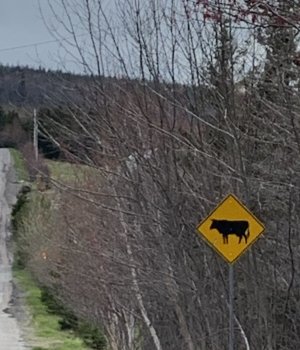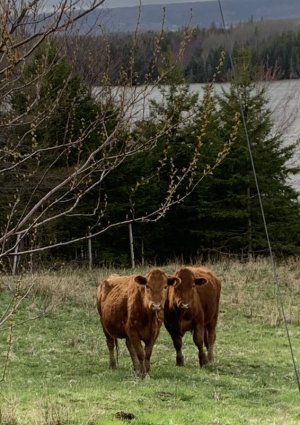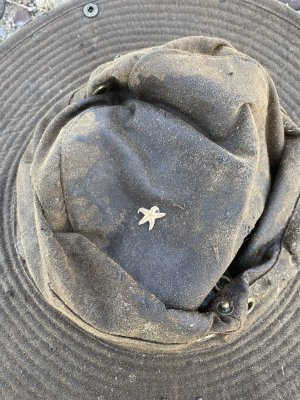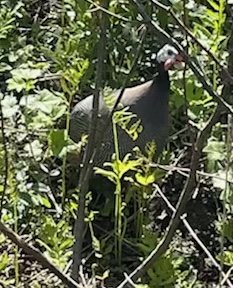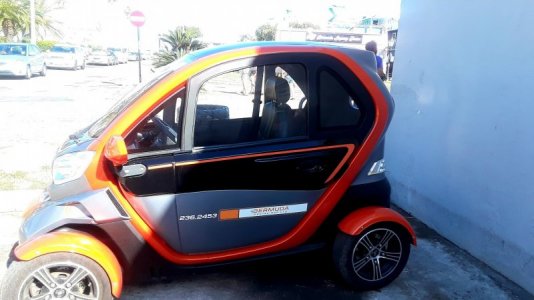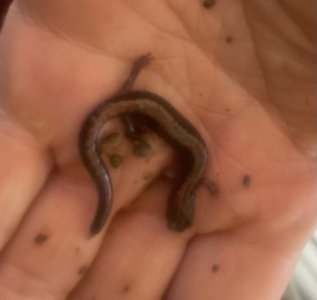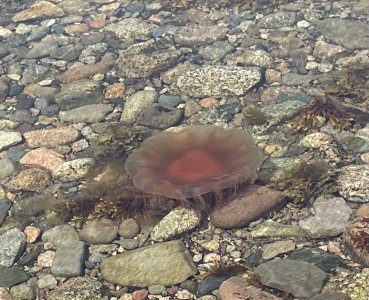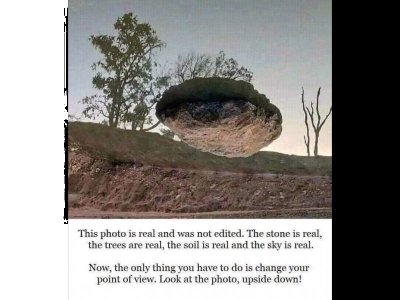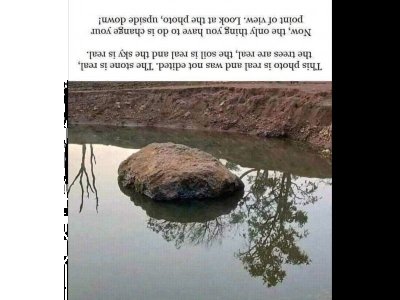Yes indeed and I am the inquisitive type.That thing you posted is one of the better mysteries. It's a good thing I don't live up in your neck of the woods or I'd be spending way too much time trying to learn what it was.
You are using an out of date browser. It may not display this or other websites correctly.
You should upgrade or use an alternative browser.
You should upgrade or use an alternative browser.
Show Us A Picture You've Taken Of Something Unusual, Uncommon or Strange
- Thread starter JonDouglas
- Start date
Certainly doesI don’t know what it is but it’s near or in Indian territory so I think it has some type of meaning and it certainly fit the thread description.
JonDouglas
Senior Member
- Location
- New England
Brothel Built Seminary: It is not the building below that is unusual. It is the people and story behind it that is somewhat uncommon. We were happily motoring through NH when the words "That sure is a creepy looking place" came through the helmet headset. Of course, those are code words for "Lets pull in there and get some pics of the place" and we did just that. The building was the 1883 Sanborn Seminary.

The architecture certainly had that creepy-gothic look to it; however, it turns out that its builder, Edward S Sanborn, had a creepy-gothic mien about him also. It seems the seminary was built to fortify his legacy as an upstanding, church-going, model citizen of Kingston, NH. That image was only half the story.
Born in 1818 to a prominent Kingston family, Edward left for Boston sometime around 1848 to make his fortune. It was in Boston that he discovered a liking for ladies of the evening. With an inheritance from his father, he teamed up with a group of women to open a house of ill-repute in Boston's west end. He apparently liked the brothel business so much that he opened more.
Around 1868, Sanborn met ninteen year old Miss Julia Hilton from Maine and made her his housemaid. In reality, Miss Julia was his mistress and eventual manager of his brothels.
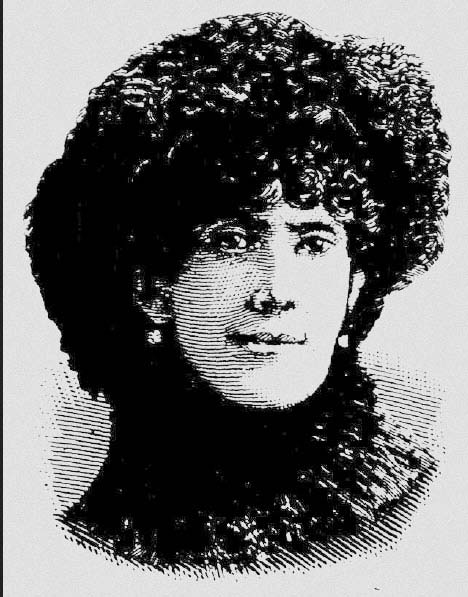
Sometime around 1880, Sanborn began to worry about how he would be remembered. He considered leaving money to Dartmouth College but instead decided to build a grand seminary school in Kingston.
Julia Hilton died in April 1885 around the time the Seminary was built but not opened. Her death left Sanborn devastated. He took sick, apparently never recovered and died the following August 4, his body having been found in a warehouse.
After his death, Sanborn's secret life was revealed and the press referred to him as a moral leper and a degraded miser. This is when the shit hit the fan and a legal battle royal ensued with the Hilton family, Sanborn family, Dartmouth College and the State or NH regarding Hilton's and Sanborn's wills. Despite family attempts to show that one or both were not of sound mind, both wills held, the seminary got funded and opened in 1888. It closed in 1966

The architecture certainly had that creepy-gothic look to it; however, it turns out that its builder, Edward S Sanborn, had a creepy-gothic mien about him also. It seems the seminary was built to fortify his legacy as an upstanding, church-going, model citizen of Kingston, NH. That image was only half the story.
Born in 1818 to a prominent Kingston family, Edward left for Boston sometime around 1848 to make his fortune. It was in Boston that he discovered a liking for ladies of the evening. With an inheritance from his father, he teamed up with a group of women to open a house of ill-repute in Boston's west end. He apparently liked the brothel business so much that he opened more.
Around 1868, Sanborn met ninteen year old Miss Julia Hilton from Maine and made her his housemaid. In reality, Miss Julia was his mistress and eventual manager of his brothels.

Sometime around 1880, Sanborn began to worry about how he would be remembered. He considered leaving money to Dartmouth College but instead decided to build a grand seminary school in Kingston.
Julia Hilton died in April 1885 around the time the Seminary was built but not opened. Her death left Sanborn devastated. He took sick, apparently never recovered and died the following August 4, his body having been found in a warehouse.
After his death, Sanborn's secret life was revealed and the press referred to him as a moral leper and a degraded miser. This is when the shit hit the fan and a legal battle royal ensued with the Hilton family, Sanborn family, Dartmouth College and the State or NH regarding Hilton's and Sanborn's wills. Despite family attempts to show that one or both were not of sound mind, both wills held, the seminary got funded and opened in 1888. It closed in 1966
JonDouglas
Senior Member
- Location
- New England
Well, possibly, given that I did stop once to get a picture of some bovine ilk who was giving me stink eye that suggested I get my motorcycle off her turf. So, I did.Adorable or what? You’d stop.... right?
View attachment 164112

Last edited:
The reason why I stopped to take a picture of these cows was because the ‘cow crossing’ sign was due to them. They graze in front of somebody’s house which is close to the road so a ‘watch for cows’ sign was put up. I find that unique.Well, possibly, given that I did stop once to get a picture of some bovine ilk who was giving me the stink eye that suggested I get my motorcycle off her turf. So, I did.

JonDouglas
Senior Member
- Location
- New England
Well, that makes sense. Although there are cows to be seen in field here, you'll not likely find a cow sign. You will, however, find moose signs but probably never see a moose, as they tend to show up in people's back yards rather than by where the signs are.The reason why I stopped to take a picture of these cows was because the ‘cow crossing’ sign was due to them. They graze in front of somebody’s house which is close to the road so a ‘watch for cows’ sign was put up. I find that unique.
Last edited:
hollydolly
SF VIP
- Location
- London England
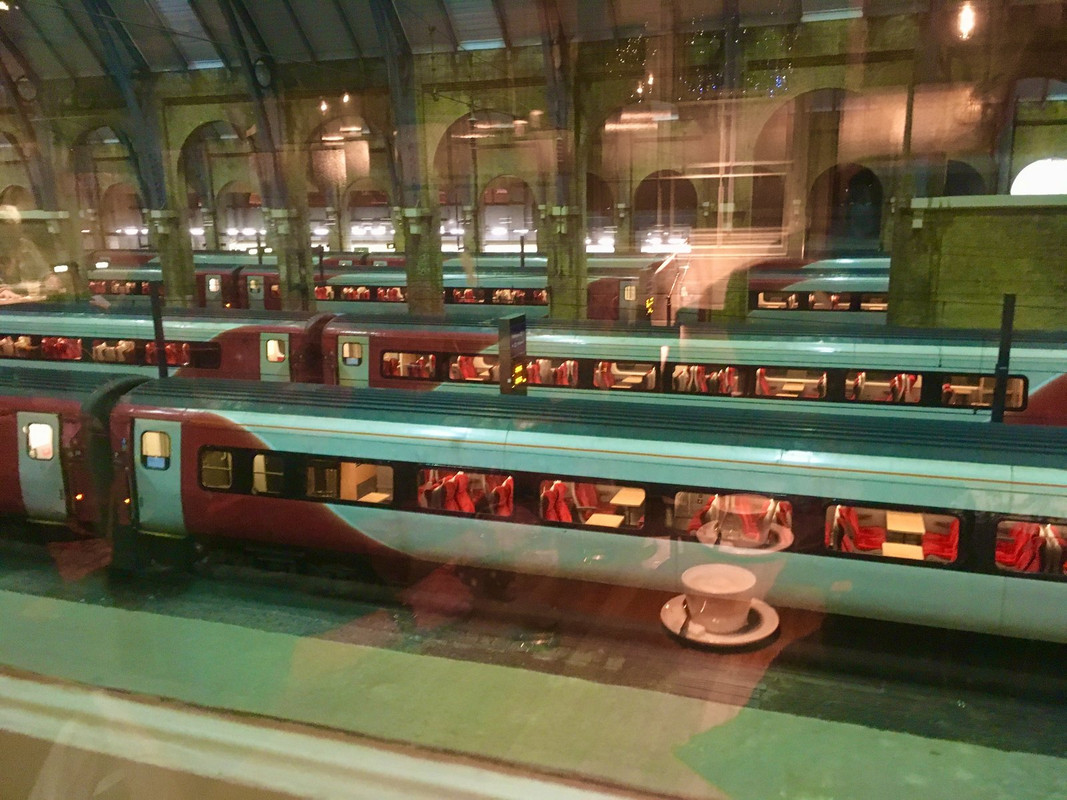
This is London Kings X station.... we were sitting at a window seat at the upper indoor cafe... looking down at the stationary trains waiting to leave... on each side of the tracks..
As you can see my coffee cup is reflected ( as is my husbands arm on the opposite side of the table)... into the train...
OneEyedDiva
SF VIP
- Location
- New Jersey
VERY cute. I like cute. It looks like fun too.A cute little (what I call) half a car. LOL It was orange so I had to photograph it. This was taken in Bermuda.
View attachment 166549
RadishRose
SF VIP
- Location
- Connecticut, USA
A wild turkey?Some people raise chickens for eggs
Some people have guinea foul for eggs
These found at side of road . They are very verbal. It’s not a great photo. It’s merely something strange and unusual
View attachment 166542
It’s a guinea foul. We didn’t know what it was and had to look it up. We’ve seen plenty of wild turkeys so knew that wasn’t it but a guinea foul I would not have guessed. They have the strangest sound ever.A wild turkey?
Murrmurr
SF VIP
- Location
- Sacramento, California
JonDouglas
Senior Member
- Location
- New England
These Are Getting Scarce: That would be those Indian/Native American gift shops along major highways. Also known as tourist traps, these kinds of places proliferated along busy highways following WWII. Below is one of the few left in this area and, surprise, it was open for business when I rode by some days ago.
![[IMG] [IMG]](https://www.affiliatehouse.com/webimages/may20_2021_mohawk-trail_giftshop.jpg)
I don't know the history of this place but did learn the Indian statue was placed there in 1974. I suspect the shop existed well before that and has changed its name many times, most recently to be "culturally sensitive". The shop is located at coordinates 42.620752, -72.750851.
![[IMG] [IMG]](https://www.affiliatehouse.com/webimages/may20_2021_mohawk-trail_giftshop.jpg)
I don't know the history of this place but did learn the Indian statue was placed there in 1974. I suspect the shop existed well before that and has changed its name many times, most recently to be "culturally sensitive". The shop is located at coordinates 42.620752, -72.750851.
Murrmurr
SF VIP
- Location
- Sacramento, California
Those look like tin signs all around the upper front. You don't see those much, either. Not on many stores, anyway. People collect them. I like the way they've scattered them at various angles.These Are Getting Scarce: That would be those Indian/Native American gift shops along major highways. Also known as tourist traps, these kinds of places proliferated along busy highways following WWII. Below is one of the few left in this area and, surprise, it was open for business when I rode by some days ago.
I don't know the history of this place but did learn the Indian statue was placed there in 1974. I suspect the shop existed well before that and has changed its name many times, most recently to be "culturally sensitive". The shop is located at coordinates 42.620752, -72.750851.
hollydolly
SF VIP
- Location
- London England
WE have those here.. ( smart cars)... people use them to drive around town cuz you can park them front end in to a little parking space....A cute little (what I call) half a car. LOL It was orange so I had to photograph it. This was taken in Bermuda.
View attachment 166549
You couldn't pay me to get into one on a busy road, there's nothing to stop you getting crushed if you drive into a feather..
Last edited:
hollydolly
SF VIP
- Location
- London England
just a question jon..I've noticed in many of your pics the sky is Turquoise.. any idea why , I've never seen turquoise skies before...These Are Getting Scarce: That would be those Indian/Native American gift shops along major highways. Also known as tourist traps, these kinds of places proliferated along busy highways following WWII. Below is one of the few left in this area and, surprise, it was open for business when I rode by some days ago.
![[IMG] [IMG]](https://www.affiliatehouse.com/webimages/may20_2021_mohawk-trail_giftshop.jpg)
I don't know the history of this place but did learn the Indian statue was placed there in 1974. I suspect the shop existed well before that and has changed its name many times, most recently to be "culturally sensitive". The shop is located at coordinates 42.620752, -72.750851.
Pappy
Living the Dream
JonDouglas
Senior Member
- Location
- New England
Skies are seldom pure blue due to haze, ground surface reflections in the air's water vapor or other factors. When you see a pure blue sky in a picture, there's a good chance the camera had a polarizing filter or the the color was pushed in some post process. In my area, there are so many trees that you're more likely to get some green reflected back into the atmosphere (a bit like a mirage). Sky color results from sunlight, whose waves are scattered by the makeup of our atmosphere. Air molecules and particles scatter the light waves. Being a shorter wavelength, blue scatters more giving the sky its blue tint. Of course blue isn't the only wavelength being scattered. You must remember that the sun's blue waves are very close to turquoise and it doesn't take much to affect a shift in that direction, depending on the scattering.just a question jon..I've noticed in many of your pics the sky is Turquoise.. any idea why , I've never seen turquoise skies before...
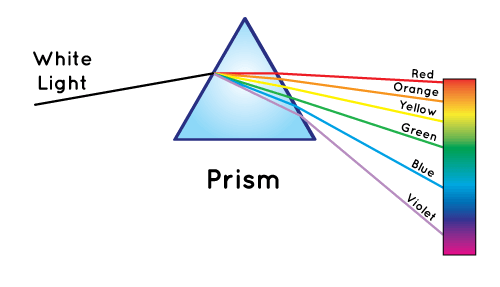
For a better, more informed discussion on this, see Rayleigh Scattering, named after British physicist Lord Rayleigh. Another factor is a person's color perception, which can vary greatly. There are a good number of factors at play in the color that shows up in a photo.
hollydolly
SF VIP
- Location
- London England
thanks for that info jon.. as you know I take a LOT of landscape photographs but I don't ever edit them ( except maybe brightness etc)... and my skies despite taking the photos over grass or seas or even in the skies themselves , have never had that turquoise hue..so I was fascinated to learn about yoursSkies are seldom pure blue due to haze, ground surface reflections in the air's water vapor or other factors. When you see a pure blue sky in a picture, there's a good chance the camera had a polarizing filter or the the color was pushed in some post process. In my area, there are so many trees that you're more likely to get some green reflected back into the atmosphere (a bit like a mirage). Sky color results from sunlight, whose waves are scattered by the makeup of our atmosphere. Air molecules and particles scatter the light waves. Being a shorter wavelength, blue scatters more giving the sky its blue tint. Of course blue isn't the only wavelength being scattered. You must remember that the sun's blue waves are very close to turquoise and it doesn't take much to affect a shift in that direction, depending on the scattering.

For a better, more informed discussion on this, see Rayleigh Scattering, named after British physicist Lord Rayleigh. Another factor is a person's color perception, which can vary greatly. There are a good number of factors at play in the color that shows up in a photo.
Last edited:


